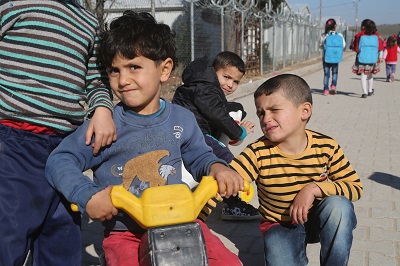Por: Tiziana Trotta
Más de un tercio de las escuelas en el mundo (34%) no dispone de saneamiento adecuado, una situación que atañe a 620 millones de niños, según un nuevo informe de Unicef y la Organización Mundial de la Salud, Agua potable, saneamiento e higiene en las escuelas, presentado este martes en Estocolmo el marco de la Semana Mundial del Agua. El número de afectados crece hasta los 900 millones si tomamos en cuenta el acceso a servicios básicos de higiene como jabón, ausentes en casi la mitad (47%) de los centros de estudio.
Unos 570 millones de estudiantes también tienen que enfrentarse a la falta de agua potable en el 31% de las escuelas. Alrededor de la mitad de los centros educativos de Oceanía o África Subsahariana, así como dos tercios de los de Asia central y del sur, dispone de este servicio básico. En las zonas rurales, la cobertura es aún más baja.
Las carencias son generalmente más pronunciadas en las primarias y las infantiles, ya que una de cada tres no dispone de agua limpia y saneamiento adecuado, mientras que la proporción en las secundarias es de una cada cuatro.
La diarrea relacionada con la falta de servicios de agua y saneamiento, según el informe, es responsable de la muerte de un menor de cinco años cada dos minutos. Además, afecta a la presencia de chicas en las aulas, quienes se ven obligadas a renunciar a las clases durante el ciclo menstrual. Por ejemplo, en el sur de Asia, una de cada tres alumnas deja de ir a la escuela unos días al mes por esta razón, como destaca un reciente informe del Fondo de las Naciones Unidas para la Infancia y WaterAid.
Las diferencias en el interior de la misma región pueden ser muy marcadas, según el estudio elaborado sobre la base de datos de 152 países entre 2000 y 2016. En África Subsahariana, por ejemplo, apenas el 12% de las escuelas de Sierra Leona dispone de servicios básicos de saneamiento, mientras que la isla Mauricio y las Seychelles han logrado la cobertura universal. Estos problemas llegan hasta Europa. En Croacia, por ejemplo, este porcentaje es de apenas el 34%.
Un 12% de las escuelas presenta servicios de saneamiento limitados, es decir, instalaciones básicas sin separación por sexo o que no podían ser utilizadas durante la realización del informe, mientras que en un 23% de los casos este servicio no estaba disponible. Esta última situación es muy común en África Subsahariana y en Asia del Sur y del Este, donde afecta a un tercio de las escuelas. Incluso cuando los centros disponen de infraestructuras, menos de la mitad son accesibles para personas con movilidad limitada.
“Las escuelas son un punto de partida importante para mejorar los hábitos de higiene de toda la familia, ya que los niños transmiten a sus padres lo que aprenden en las aulas”, explica Tom Slaymaker, de Unicef. El experto admite que las metas marcadas por los Objetivos de Desarrollo Sostenible en este ámbito (acceso para todos a agua asequible y limpia, así como a servicios de saneamiento e higiene adecuados) son muy ambiciosas y los obstáculos, muchos. “Es preferible que cada país fije sus propios objetivos de manera realista, según su contexto. La financiación, por ejemplo, sigue siendo un problema en muchos países”. En otros, en cambio, se trata más bien de empezar a pensar de manera distinta. “No es solo una cuestión de construir infraestructuras. Hay que plantearse también cómo asegurarse su manutención y funcionalidad a largo plazo”, asegura.
Fuente: https://elpais.com/elpais/2018/08/28/planeta_futuro/1535448554_657812.html









 Users Today : 50
Users Today : 50 Total Users : 35460181
Total Users : 35460181 Views Today : 70
Views Today : 70 Total views : 3418853
Total views : 3418853